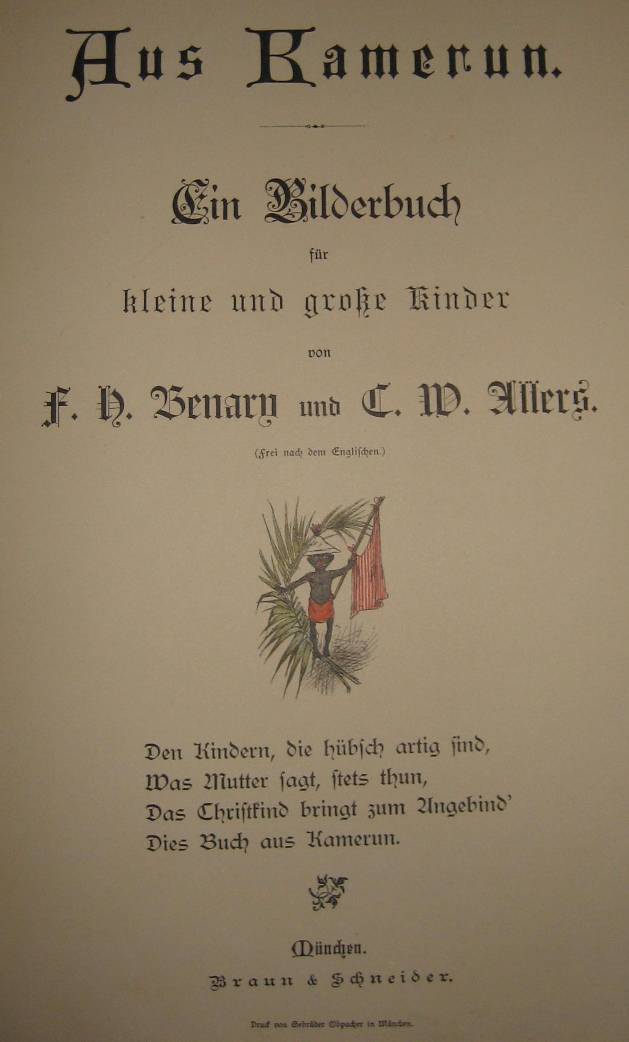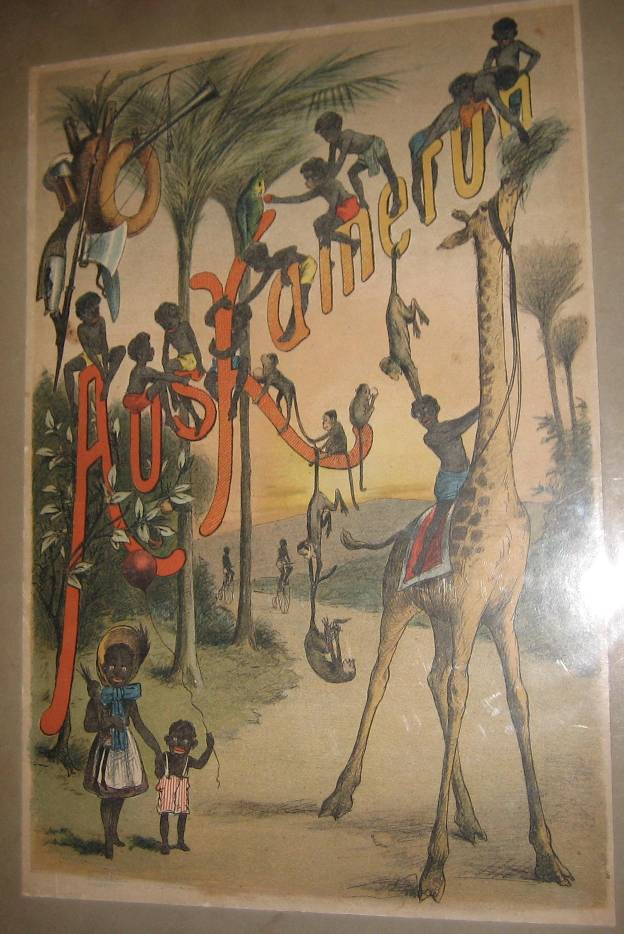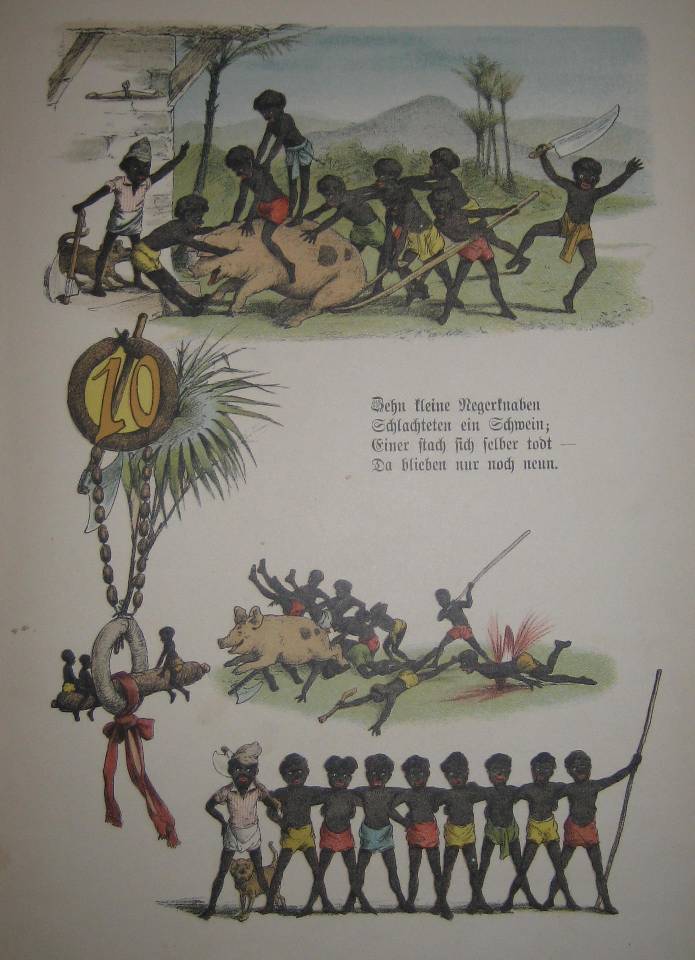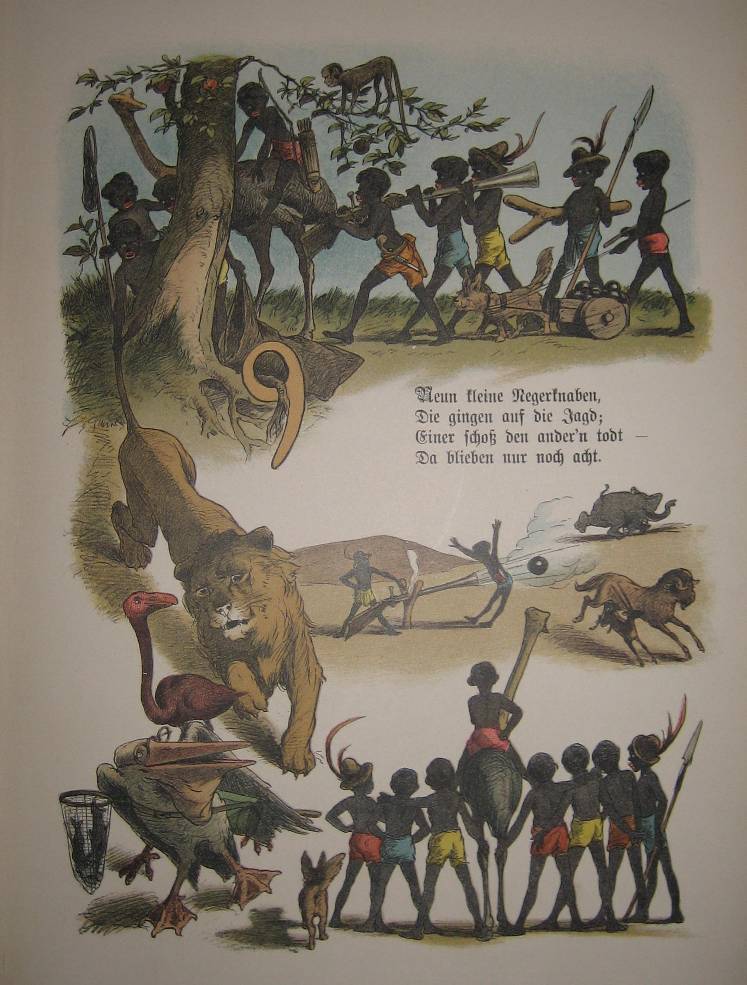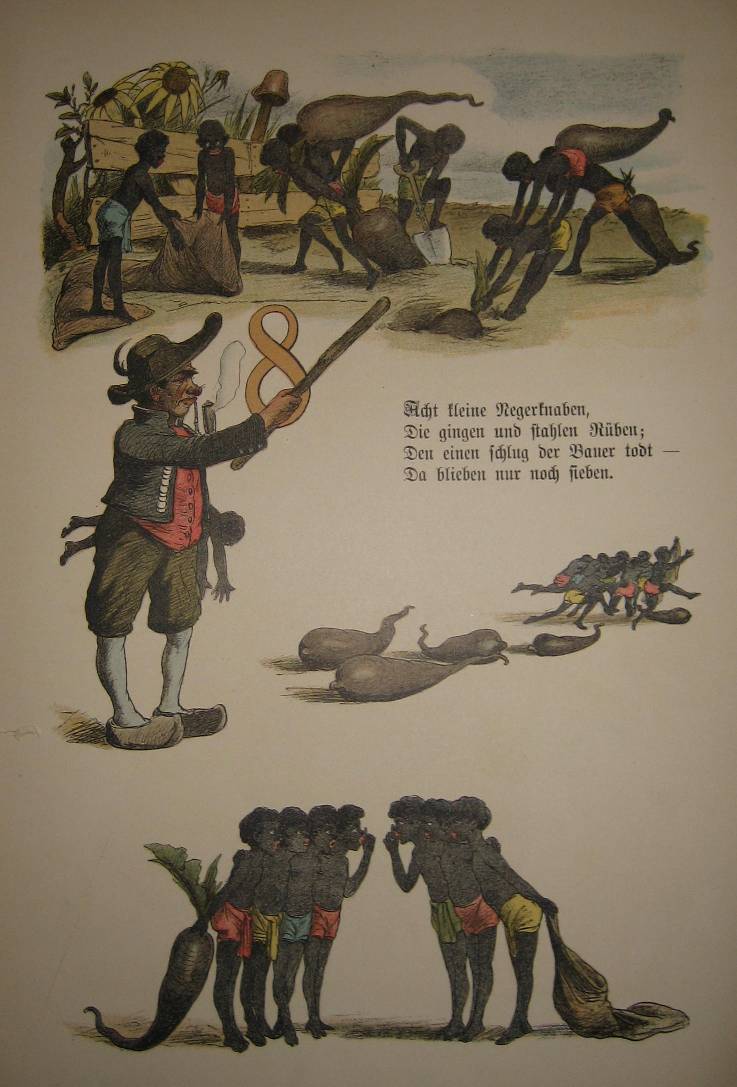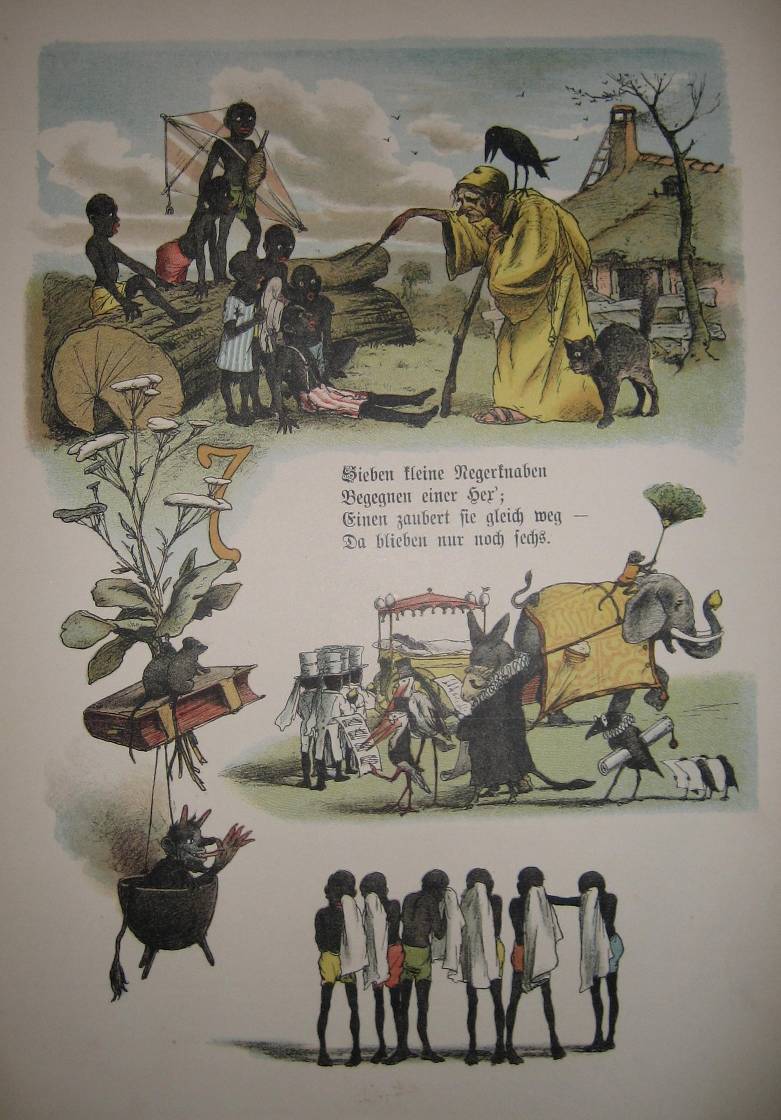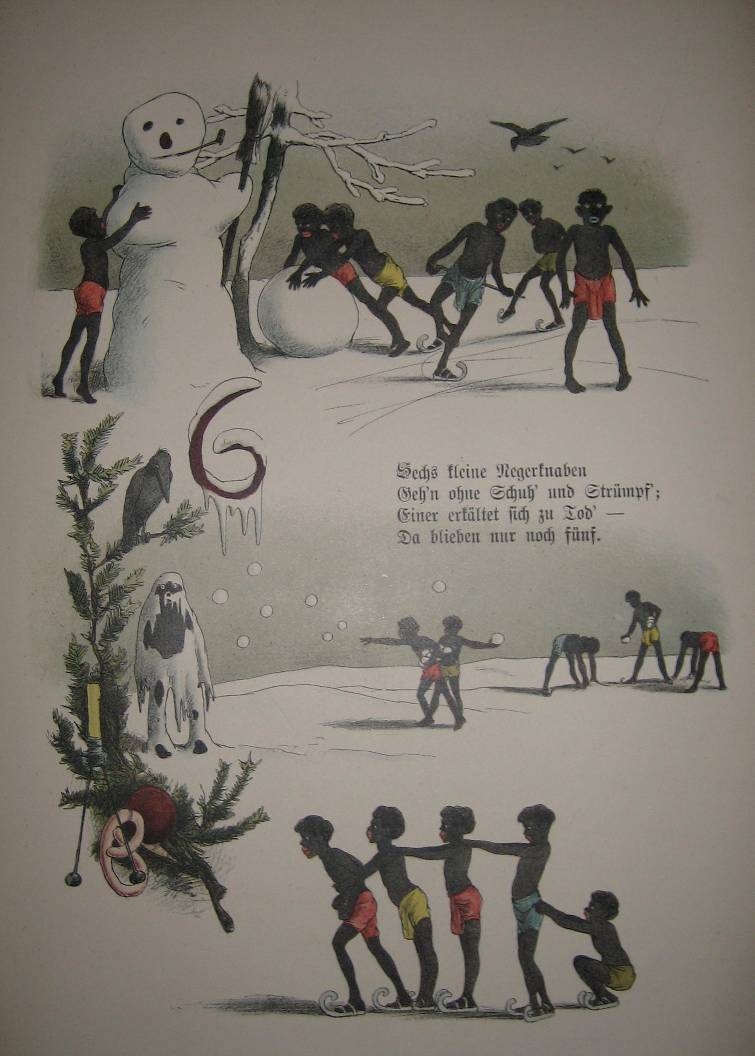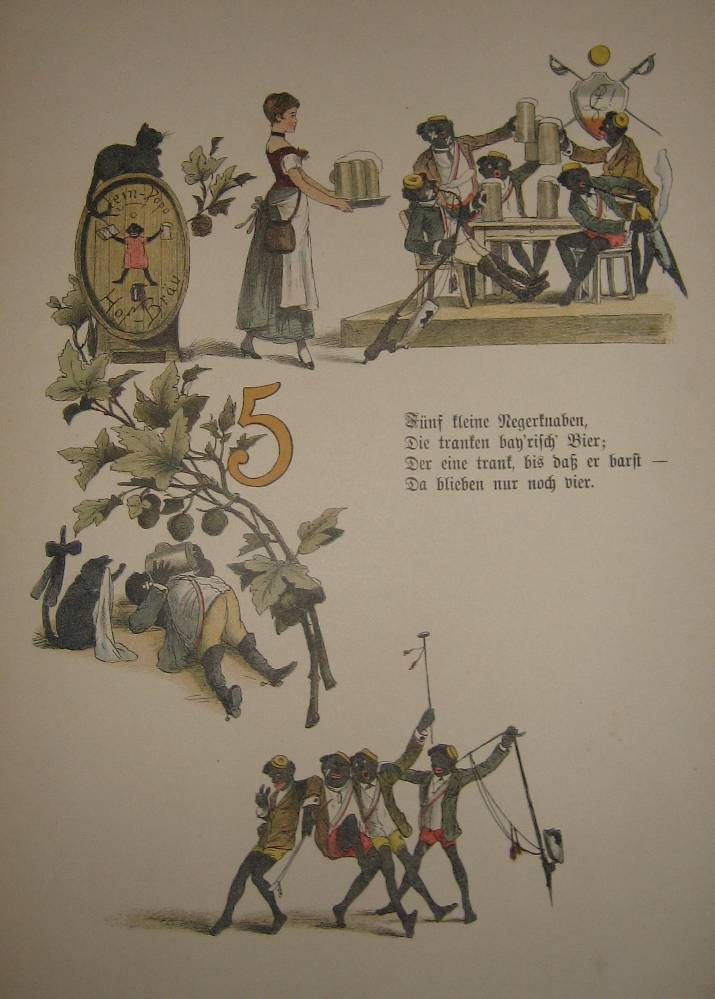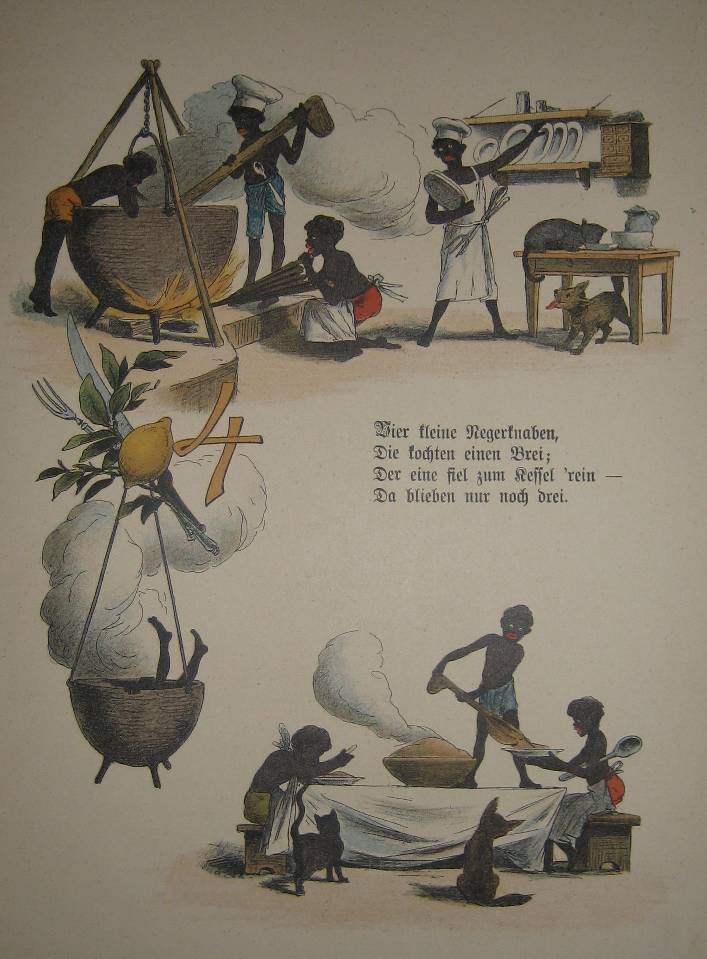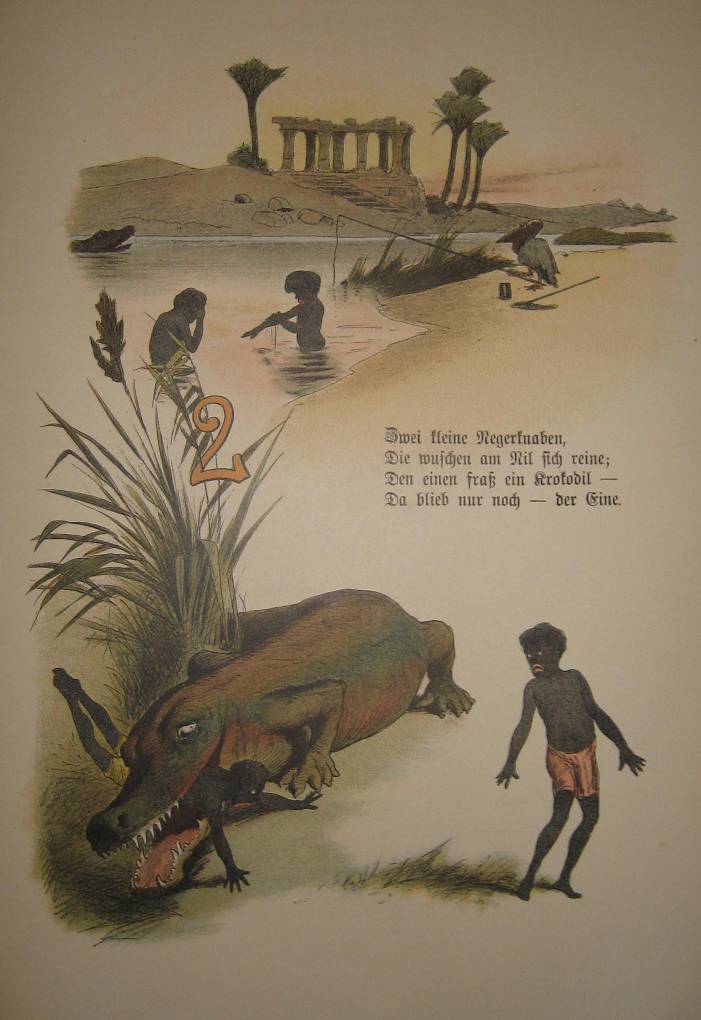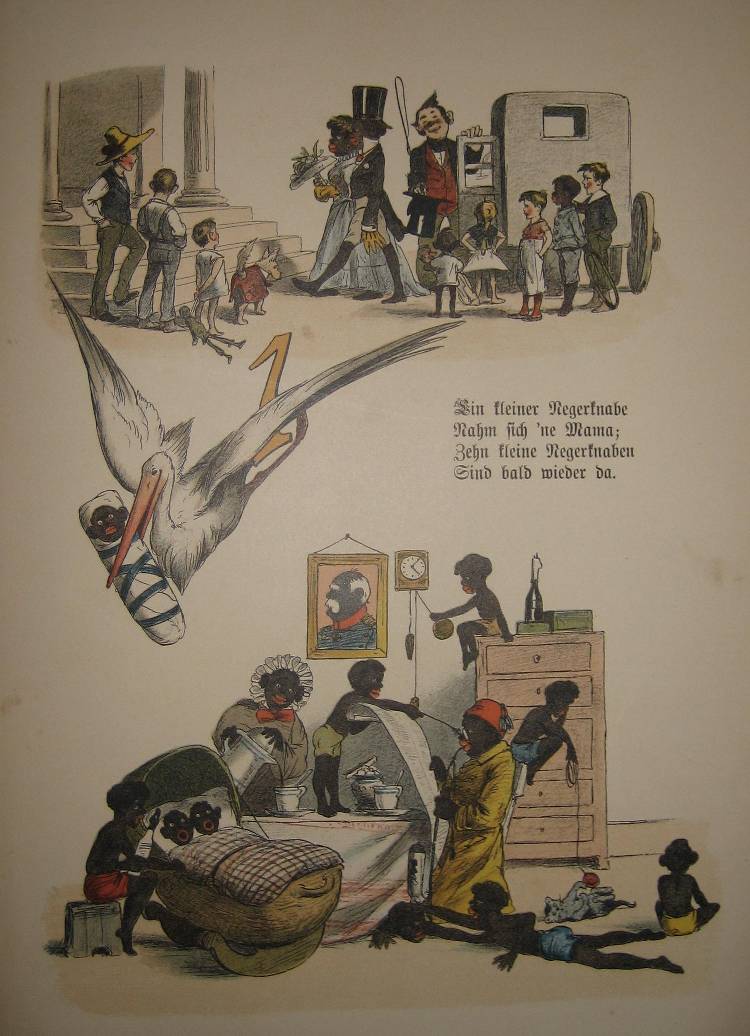From the latter third of the nineteenth century, in the context of the Scramble for Africa and the development of a new consumer culture based on catchy images that flattered white European audiences, stereotyped images of Africans became increasingly commonplace in books and toys aimed at young Germans. Such images served to educate in two senses. They were used to teach particular skills (how to read, how to count, what social roles they were expected to play), and they also served to instruct Germans on their inherent superiority over the world’s non-white inhabitants.
The example below is the earliest known German adaptation of a hit American minstrel song from 1868 entitled Ten Little Injuns, in which the ten characters whittle themselves down to none by dying or otherwise disappearing in variously gruesome ways. The song was soon adapted as Ten Little Niggers, in which form it became a staple of minstrel performances in the US and in the UK. In 1885 the German author F. H. Bernary and illustrator C. W. Allers re-wrote the rhyme to capitalize on Germany’s recent colonial acquisitions, publishing it as Out of Cameroon: A Picture Book for Children Young and Old.
Adaptations of Zehn kleine Negerlein, recently re-titled Zehn kleine Kinderlein (Ten Little Children) in a strained effort to square the “tradition” with a multicultural Germany, have remained a part of the standard repertoire of children’s rhymes into the present-day.
Jeff Bowersox
deutsch
Source: F. H. Bernary and C. W. Allers, Aus Kamerun. Ein Bilderbuch für kleine und große Kinder (Munich: Braun & Schneider, 1885), images courtesy of Gerd Fahrenhorst.

Racist caricatures for children: “Ten Little Negroes” (1885) by Jeff Bowersox is licensed under a Creative Commons Attribution-ShareAlike 4.0 International License.
Permissions beyond the scope of this license may be available at https://blackcentraleurope.com/who-we-are/.
